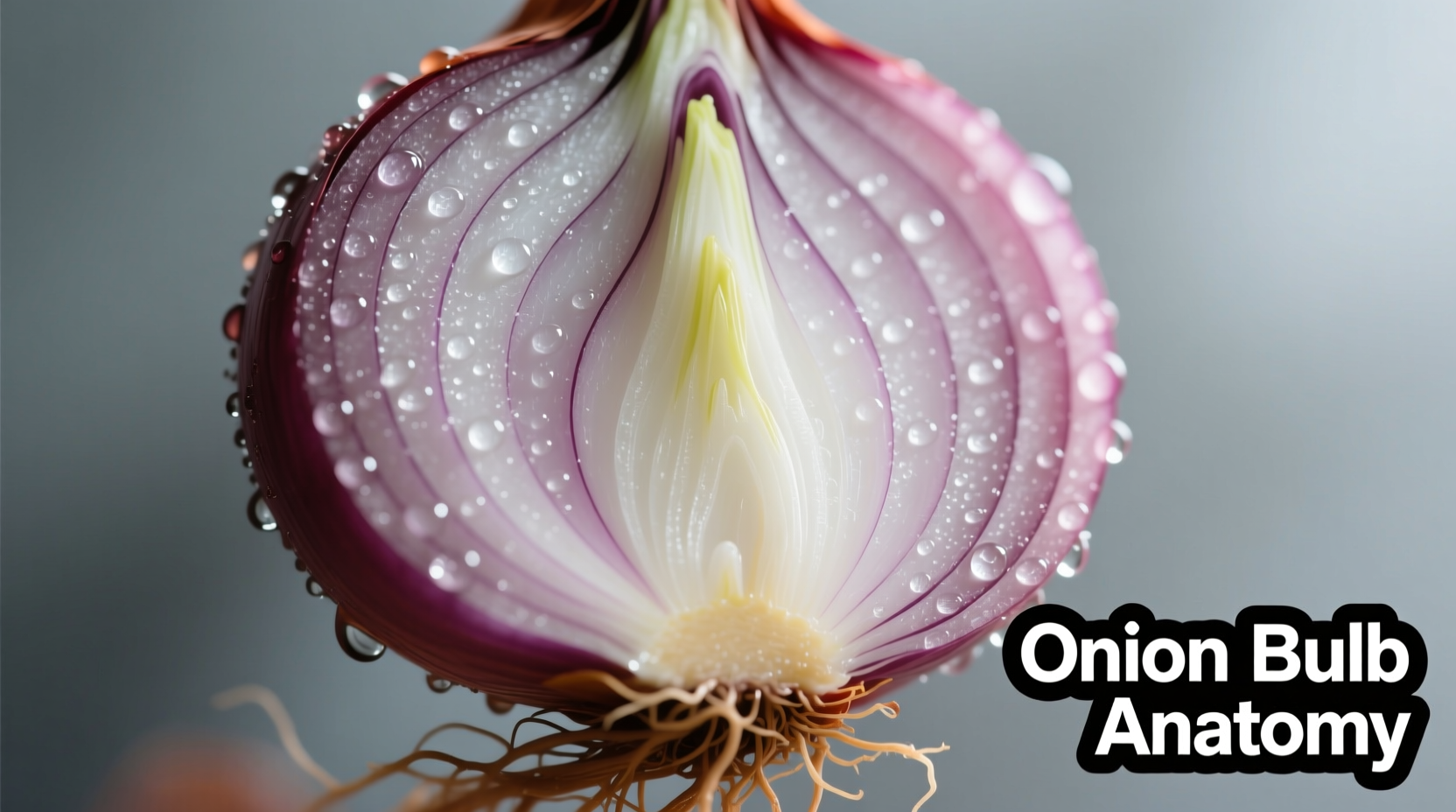Ever found yourself debating whether that onion in your kitchen is technically a fruit or vegetable? You're not alone. This common kitchen confusion stems from conflicting information online and the fact that some plants like tomatoes blur the lines. Let's cut through the confusion with clear, science-backed facts you can trust.
Botanical Classification: Why Onions Are Vegetables
Understanding whether an onion qualifies as a fruit or vegetable requires examining botanical definitions. In botanical terms, a fruit develops from the flower of a plant and contains seeds. Think apples, tomatoes, or cucumbers—all develop from flowers and house seeds.
Conversely, vegetables refer to other edible plant parts:
- Roots (carrots, beets)
- Stems (celery, asparagus)
- Leaves (spinach, lettuce)
- Bulbs (onions, garlic)
An onion is a modified underground stem that stores nutrients for the plant. The layers you peel back are actually fleshy leaves surrounding a small stem at the center. When an onion plant flowers, it produces a separate seed head above ground—but the edible bulb itself contains no seeds, disqualifying it from botanical fruit classification.
| Characteristic | Fruits | Vegetables |
|---|---|---|
| Botanical Origin | Develop from flower | Other plant parts |
| Seeds | Contain seeds | No seeds in edible portion |
| Onion Classification | ❌ Doesn't apply | ✅ Bulb vegetable |
| Tomato Classification | ✅ Botanical fruit | ❌ Culinary vegetable |
Culinary Tradition: How Chefs Classify Onions
While botany provides the scientific framework, culinary practice often follows different conventions. In cooking:
- Fruits typically have sweet or tart flavors used in desserts
- Vegetables generally have savory profiles used in main dishes
Onions fit squarely in the vegetable category for culinary purposes. Professional chefs worldwide treat onions as foundational vegetables in flavor bases like mirepoix (onions, carrots, celery) and sofrito. Their savory profile, cooking behavior, and culinary applications align completely with vegetable usage patterns.
Why the Confusion Persists
The onion classification confusion often stems from two sources:
- Misunderstanding of botanical terms: Many people don't realize that "fruit" has a specific scientific meaning that differs from everyday usage. Botanically, tomatoes, cucumbers, and peppers are fruits—but culinarily, they're treated as vegetables.
- Overgeneralization from other plants: Since some allium family members like garlic scapes produce seed pods, people mistakenly believe the bulb itself contains seeds.
Unlike fruits such as apples or oranges that develop from flowers and contain seeds, onions grow as underground storage organs. The Royal Horticultural Society confirms that onions are classified as bulb vegetables in both horticultural and culinary contexts.
Practical Implications for Home Cooks
Understanding onion classification matters for more than just trivia—it affects how you use them:
- Storage: As vegetables, onions require cool, dry storage (not refrigeration) to prevent sprouting
- Cooking behavior: Their vegetable nature explains why they caramelize rather than macerate like fruits
- Nutrition: Onions provide vegetable-class nutrients like vitamin C and quercetin, not fruit-dominant vitamins
- Gardening: Knowing they're bulb vegetables informs proper planting depth and spacing
When recipes call for "vegetables," onions always qualify. Their role as aromatic bases in virtually all global cuisines—from French mirepoix to Indian tadka—further confirms their vegetable status in culinary practice.

Historical Context of Onion Classification
The classification of onions has evolved alongside botanical science:
- Ancient times: Egyptians classified onions as vegetables based on usage, not science
- 18th century: Linnaeus established modern botanical classification, placing onions in Allium genus
- 19th century: USDA formalized vegetable categories for agricultural purposes
- 20th century: Culinary schools standardized teaching onions as vegetables
This historical progression shows consistent treatment of onions as vegetables across both scientific and practical domains. The USDA's FoodData Central database categorizes onions under vegetables, reflecting this longstanding consensus.
Common Misconceptions Addressed
Let's clear up some persistent myths:
- "Onions have seeds so they must be fruits" - While onion plants produce seeds in flower heads, the edible bulb contains no seeds
- "If tomatoes are fruits, onions must be too" - Tomatoes develop from flowers and contain seeds; onions don't
- "Botanical classification doesn't matter for cooking" - Understanding plant biology helps with growing, storing, and using ingredients properly
The confusion often arises because some plants straddle categories. But onions present a clear case—they're definitively vegetables by both scientific and culinary standards.
Practical Takeaways for Your Kitchen
Now that we've settled the classification question, here's how to apply this knowledge:
- Treat onions as vegetables in meal planning and nutrition tracking
- Store them in a cool, dark place like other root vegetables
- Use them as aromatic bases in savory dishes, not sweet preparations
- Understand their growth cycle if you're gardening (bulb formation vs. seed production)
Whether you're meal prepping, gardening, or just curious about your ingredients, knowing onions are vegetables helps you use them more effectively. This understanding connects you to centuries of culinary tradition and botanical science.











 浙公网安备
33010002000092号
浙公网安备
33010002000092号 浙B2-20120091-4
浙B2-20120091-4